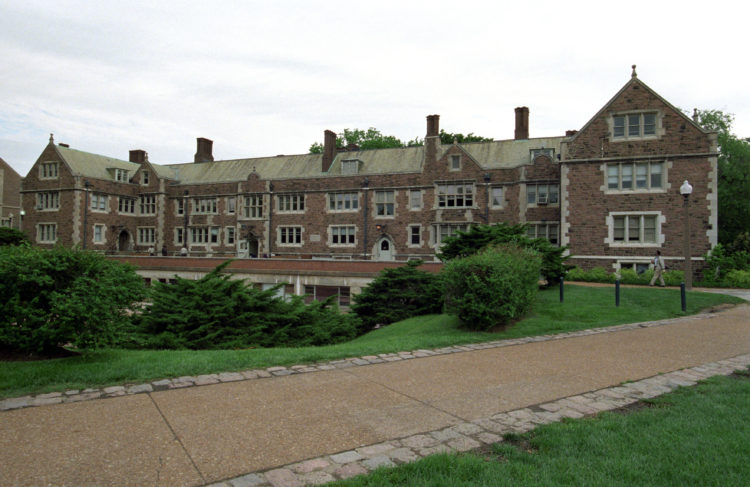 As part of our Centennial series, we turn the clock back to the 1960s when the business school outgrew its first building and moved to a remodeled dormitory.
As part of our Centennial series, we turn the clock back to the 1960s when the business school outgrew its first building and moved to a remodeled dormitory.
This is the text of an actual memo found in the Olin archives. It’s from 1961 and typed on a typewriter with carbon paper to create multiple copies:
“Memo to all Business School Faculty
From: Dr. Arthur Mason Jr., Acting Dean
Subject: Dedication and open house of Prince Hall on May 5 and 7, 1961
In the evening of Friday, May 5, you, the faculty, will be host to Mr. Prince at a stag dinner in Prince Hall. The schedule of events for this affair are as follows: 5:30-6:30 p.m., refreshments at Chancellor Shepley’s house; 6:30 p.m., dinner and dedication at Prince Hall. This affair will be a small, informal one at Mr. Prince’s request.
After dinner, Mr. Prince will be given a personal tour of the building, so I hope that all of us will have our offices available for display.”
Frank J. Prince was coming to the WashU campus to see a project that he helped fund. Namely, the transformation of a former dormitory into an academic building that would be called Prince Hall—the home of the business school from 1961 to 1987.
On the day Prince Hall held its open house, The St. Louis Post-Dispatch reported that “Prince Hall…has three times the number of seminar rooms and a third more classrooms than the business school’s former headquarters, Duncker Hall. It has a machine room and statistics laboratory, and library space for 15,000 volumes.” The May 7, 1961 edition of the newspaper also reported that the remodeling of Liggett Hall from a dorm to the new home of the business school “cost about $325,000.”

Frank J. Prince, on right, looks on as the building formerly known as Liggett Hall is dedicated as Prince Hall.
Prince was a Director and former President of Universal Match Corporation, a company founded in St. Louis in 1925, and described by The New York Times as “the world’s largest manufacturer of matchbooks.”
Ironically, the matchbook magnate’s name would replace an even more famous name—Liggett—that had graced the dormitory since its construction in 1902. Elizabeth J. Liggett, widow of St. Louis tobacco merchant and partner in the firm Liggett and Myers, was among the small group of donors Robert Brookings had assembled to fund the first buildings on WashU’s new hilltop campus west of Forest Park.
The Liggett dormitory for men was constructed to the west of the “first quadrangle,” known today as the Brookings Quad, and was located on the current site of the Danforth University Center (DUC).
Gary Hochberg, who served as dean of the undergraduate program for 25 years before developing the Specialized Masters Programs until his retirement in 2014, remembers what he called the ‘Prince Hall two-step.’ “Some of the hallways were so narrow in Prince that when two people crossed paths,” Hochberg recalls with a smile, “they had to turn sideways to pass each other. It was like doing a little dance just to get down the hall.”
A 2006 Student Life article says Vice Chancellor Emeritus Frederic Volkmann cited Prince Hall’s “troubling features such as numerous load-bearing walls, poorly constructed rooms and difficulties with making the building accessible as per the Americans with Disabilities Act” as reasons for its demolition later that year. The Danforth University Center (DUC) has replaced the historical building.
For more stories about Olin’s first century in business, please visit Olin100.wustl.edu
Photos courtesy of WashU Archives.



